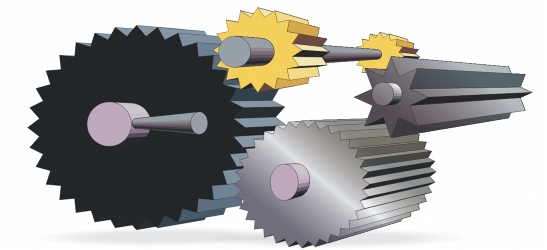Elevating Design: A Comprehensive Guide to Creating Extrusions in CorelDRAW

Introduction:
CorelDRAW, a versatile and powerful vector graphics software, provides designers with an array of advanced tools to bring depth and dimension to their creations. Among these tools, the ability to create extrusions stands out as a transformative feature, allowing artists to turn 2D objects into three-dimensional forms. This comprehensive guide explores the intricacies of creating extrusions in CorelDRAW, covering techniques, creative applications, and practical considerations to unlock the full potential of this dynamic feature.
I. Understanding Extrusions in Design:
- Definition and Purpose:
- An extrusion in design refers to the process of giving thickness and depth to a two-dimensional object, essentially turning it into a three-dimensional shape.
- The purpose of creating extrusions is to add realism, depth, and visual interest to flat objects, enhancing the overall impact of a design.
- CorelDRAW’s Extrusion Tools:
- CorelDRAW provides dedicated extrusion tools that streamline the process of giving depth to objects.
- These tools allow designers to achieve a variety of extrusion effects, from simple bevels to intricate 3D shapes.
II. Types of Extrusions in CorelDRAW:
- Basic Extrusions:
- Basic extrusions involve adding a uniform thickness to the entire object, creating a simple three-dimensional form.
- This type of extrusion is suitable for straightforward designs that require a subtle depth effect.
- Bevel Extrusions:
- Bevel extrusions introduce a sloped edge to the extruded object, adding a chamfered or rounded appearance.
- Bevels contribute to a more dynamic and visually interesting 3D effect, especially when applied to text or logos.
- Contour Extrusions:
- Contour extrusions involve creating intricate three-dimensional shapes with curves, indents, or complex profiles.
- This type of extrusion is ideal for designing advanced 3D graphics, logos, or detailed illustrations.
III. Creating Basic Extrusions:
- Selecting Objects:
- Begin by selecting the object you wish to extrude using CorelDRAW’s selection tools.
- Objects can include shapes, text, or imported graphics that you want to give depth.
- Accessing the Extrude Tool:
- The Extrude Tool in CorelDRAW is located in the Toolbox.
- Activate the Extrude Tool to access the extrusion options and controls.
- Setting Extrusion Parameters:
- CorelDRAW’s Extrude Tool provides parameters to control the depth, direction, and appearance of the extrusion.
- Adjust these parameters based on your design preferences, ensuring the extrusion aligns with your creative vision.
- Manipulating Extruded Objects:
- After applying the extrusion, use the interactive controls to manipulate the extruded object in real-time.
- Rotate, scale, or move the extruded object to achieve the desired orientation within the design.
IV. Creating Bevel Extrusions:
- Selecting and Accessing the Extrude Tool:
- Follow the same steps as basic extrusions to select the object and access the Extrude Tool.
- Ensure the object is prepared for extrusion before proceeding.
- Applying Bevel Effects:
- In the Extrude Tool options, choose the Bevel Extrusion type.
- Adjust parameters such as bevel depth, bevel angle, and other settings to customize the appearance of the bevel.
- Interactive Bevel Adjustments:
- CorelDRAW provides interactive controls for adjusting the bevel in real-time.
- Experiment with different bevel angles and depths to achieve the desired 3D effect for your object.
V. Creating Contour Extrusions:
- Advanced Object Preparation:
- Contour extrusions often require more detailed object preparation, especially for intricate shapes or logos.
- Ensure that the object is well-prepared, and any components are grouped or combined appropriately.
- Accessing Extrude Tool Options:
- Similar to basic and bevel extrusions, access the Extrude Tool and choose the Contour Extrusion type.
- Explore the options for contour depth, contour profiles, and other parameters.
- Exploring Contour Profiles:
- CorelDRAW allows designers to use predefined contour profiles or create custom contour profiles for more personalized extrusions.
- Experiment with different profiles to achieve diverse and visually engaging 3D shapes.
VI. Creative Possibilities with Extrusions:
- 3D Text and Typography:
- Extrusions are a powerful tool for creating three-dimensional text and typography in CorelDRAW.
- Apply bevels and contours to text elements to add depth and make them visually striking.
- Logo Design and Branding:
- Logos and branding elements benefit from extrusions, enhancing their visual impact and making them more memorable.
- Experiment with different extrusion techniques to find the best fit for your brand’s identity.
- Architectural Illustrations:
- Extrusions are essential for creating realistic architectural illustrations, adding depth to buildings, structures, and interior spaces.
- Use extrusions to simulate the three-dimensional characteristics of architectural elements.
- Product Prototyping:
- Designers involved in product prototyping can use extrusions to visualize and simulate physical objects.
- Extrusions help in creating detailed and realistic representations of product designs.
VII. Best Practices for Creating Extrusions:
- Object Preparation:
- Ensure that objects are appropriately prepared for extrusion, especially for complex shapes.
- Group components and clean up any unnecessary details before applying extrusions.
- Consistent Lighting and Shadows:
- Maintain consistency in lighting and shadows across the design when using extrusions.
- This ensures a realistic and cohesive appearance of 3D elements within the overall composition.
VIII. Troubleshooting and Tips:
- Preview Mode:
- CorelDRAW offers a preview mode that allows designers to assess the extrusion effect before applying it permanently.
- Use this mode to fine-tune settings and ensure the desired 3D effect is achieved.
- Undo and Redo:
- Take advantage of the undo and redo functions in CorelDRAW when experimenting with extrusions.
- This allows for a flexible and iterative approach to refining the 3D appearance.
IX. Continuous Learning and Mastery:
- Explore Advanced Features:
- Delve into advanced features related to extrusions, such as mapping textures or creating custom contour profiles.
- Advanced features provide additional creative possibilities and enhance mastery of extrusion techniques.
- Community Engagement:
- Join design communities, forums, and social media groups to connect with other CorelDRAW users.
- Share experiences, insights, and extrusion techniques with the community to foster continuous learning and improvement.
X. Conclusion:
In conclusion, the ability to create extrusions in CorelDRAW is a transformative feature that opens up a realm of creative possibilities for designers. Whether enhancing typography, designing logos, illustrating architecture, or prototyping products, extrusions add depth and dimension to designs, elevating them to new levels of visual sophistication. By mastering the art of extrusion, designers unlock the full potential of CorelDRAW as a versatile tool for bringing ideas to life in three-dimensional space. As a cornerstone in the graphic design process, extrusions exemplify the innovation and creativity that CorelDRAW brings to the forefront of visual communication.







